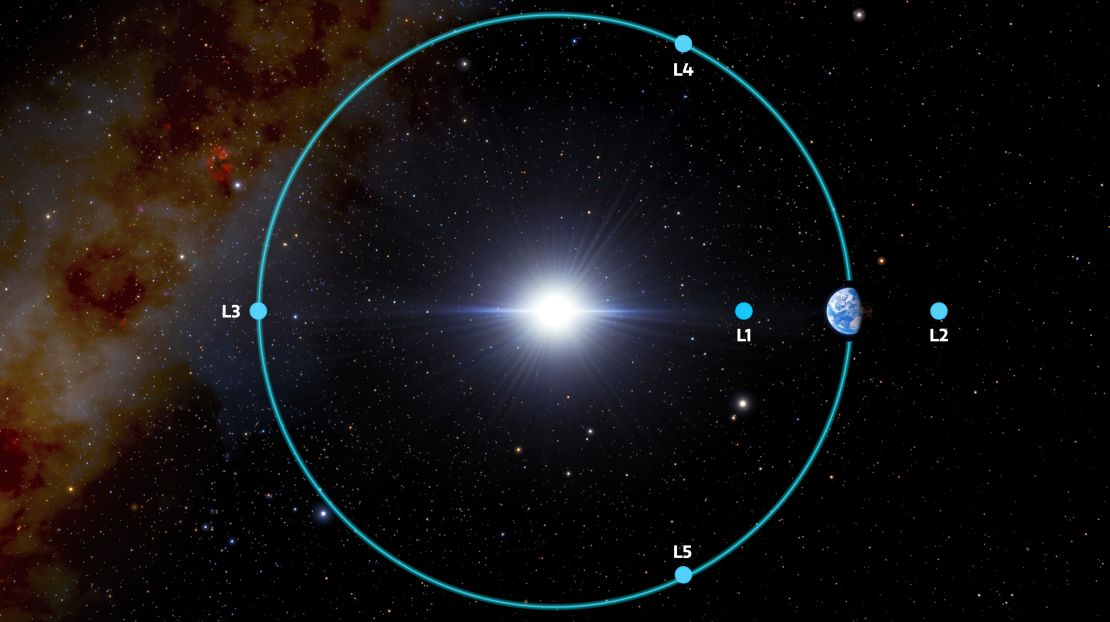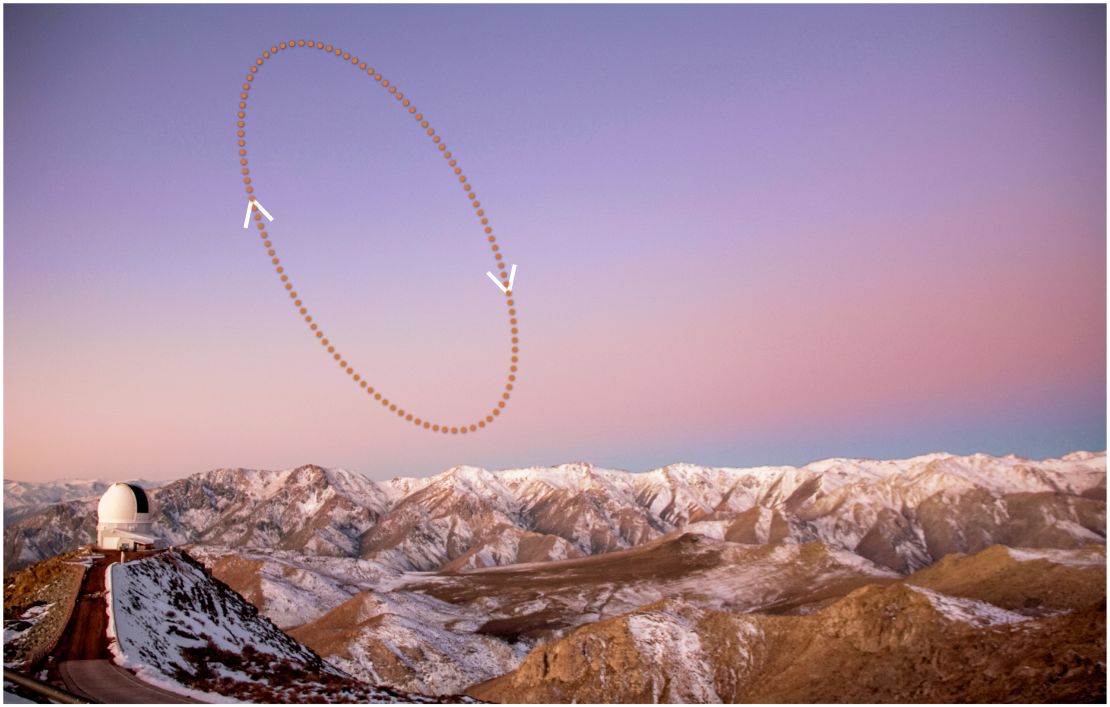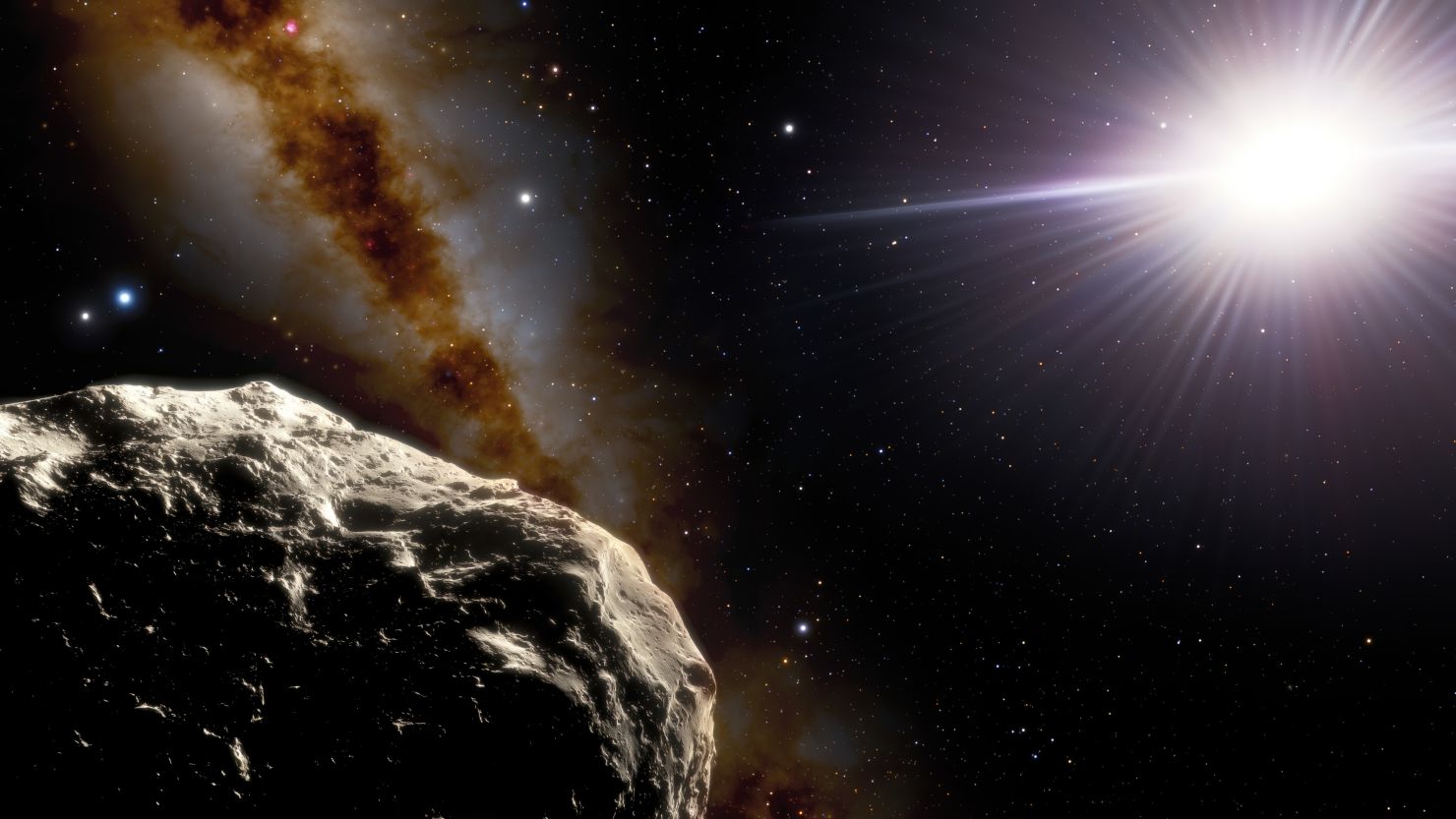Sign up for CNN’s Wonder Theory science newsletter. Explore the universe with news on fascinating discoveries, scientific advancements and more.
Our planet has a celestial sentry leading the way around the sun, and it’s only the second Earth Trojan asteroid ever discovered.
Astronomers observed asteroid 2020 XL5 using the Southern Astrophysical Research Telescope in Chile. A study detailing the discovery of the Earth Trojan asteroid published Tuesday in the journal Nature Communications.
“Trojans are objects sharing an orbit with a planet, clustered around one of two special gravitationally balanced areas along the orbit of the planet known as Lagrange points,” said study coauthor Cesar Briceño, SOAR telescope scientist at the Cerro Tololo Inter-American Observatory, in a statement.
Lagrange points are regions of space where the gravitational pull from the sun and one of the planets is balanced, said lead study author Toni Santana-Ros, a researcher from the University of Alicante and Institute of Cosmos Sciences of the University of Barcelona.
The stable orbit of Earth Trojan asteroids would make them ideal for flybys from future space missions.
“If we are able to discover more Earth Trojans, and if some of them can have orbits with lower inclinations, they might become cheaper to reach than our Moon,” Briceño said. “So they might become ideal bases for an advanced exploration of the Solar System, or they could even be a source of resources.”

Trojan asteroids, which take their name from Greek mythology, have been found orbiting the sun along the same path as planets like Jupiter, Venus, Mars, Uranus and Neptune. Jupiter has more than 5,000 known Trojan asteroids that race ahead of and trail behind the giant planet. The recently launched NASA Lucy mission will be the first to explore some of Jupiter’s Trojans on its ambitious 12-year journey.
This is also the larger of the two Earth Trojan asteroids so far, measuring about 0.73 miles (1.2 kilometers) in diameter. The first one, 2010 TK7, was found over a decade ago, and it’s about three times smaller.
Astronomers initially spotted the newly found Trojan asteroid on December 12, 2020, using the Pan-STARRS1 survey telescope in Hawai’i and followed up with observations from other telescopes. At first, they thought it was just a near-Earth asteroid crossing our planet’s orbit, but data from the SOAR telescope was compared with previous observations captured by the Víctor M. Blanco 4-meter Telescope in Chile from 2012 to 2019.
Nearly a decade’s worth of data helped scientists refine the asteroid’s orbit to confirm that it’s a Trojan asteroid. The space rock will maintain its current orbit for the next 4,000 years before gravity will likely send it off on a journey through space or in a highly elliptical orbit around the sun.
Researchers also determined that it’s a C-type asteroid that contains a lot of carbon, making it the most common type of asteroid found in our solar system. It’s possible that this object originated from the main asteroid belt between Mars and Jupiter but was kicked out due to the massive gravitational influence of Jupiter. But more research is needed to determine the asteroid’s origin.
Discovery challenges
Astronomers think there are likely many more Earth Trojan asteroids to discover, but they are incredibly difficult to spot. Trojan asteroids are on orbits that place them in front of or behind a planet as it orbits the sun, and the asteroids appear close to the sun in our sky if we’re observing them from Earth.
Observations of Trojan asteroids can only be carried out very close to sunrise or sunset with telescopes aimed near the horizon. This configuration means the telescopes have to peer through the thickest part of Earth’s atmosphere. The SOAR telescope was able to point 16 degrees above the horizon.

“These were very challenging observations, requiring the telescope to track correctly at its lowest elevation limit, as the object was very low on the western horizon at dawn,” Briceño said.
As more and more satellite constellations are launched, this could impact astronomers trying to observe objects just above the horizon.
Finding more Earth Trojan asteroids could shed light on the early days of our solar system.
“Asteroids are time capsules from the earliest days of our Solar System and can teach us lots about the era of planetary formation,” Santana-Ros said. “Earth Trojans are particularly interesting, as they could be leftover material from the formation of Earth. Finding an Earth Trojan made of material leftover from Earth’s formation would be incredibly helpful for unravelling many secrets of the early Solar System.”




